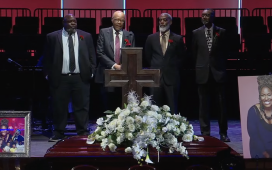Aditya Chakrabortty suggests churches have gone from many suburban areas (The blackouts summed up a crisis of our public spaces, 14 August). But our research shows that there are around 40,300 church buildings in the UK open to the public and being used for worship – more than the UK’s 39,000 pubs.
As well as being places of worship, church buildings benefit the wider community, being used for playgroups, lunch clubs, food banks, and social and cultural activities including concerts and exhibitions.
Although some Anglican, Roman Catholic and Methodist church buildings have closed in recent years, this loss has been outweighed by the growth of new evangelical and Pentecostal church congregations. Migration to the UK is another factor behind the buoyancy in the number of churches, with new congregations often gathering in non-traditional spaces such as converted cinemas, warehouses or shops.
At a time when so many public buildings are closing and high streets are losing their libraries, shops and pubs, church buildings are places where people can meet, work together and build communities. That’s why it’s so important to keep them open and in good repair.
Eddie Tulasiewicz
National Churches Trust
• Aditya Chakrabortty should visit Chipping Norton, where, despite the notion that everyone is a wealthy member of the Chipping Norton set, there is a high level of social deprivation. The bank has closed down, but the church, far from being closed too, is buying it to provide a hub for the community. The churches also fund a youth worker for the town, a pastoral support worker for the primary school and a CAP debt centre.
Clare MacInnes
Milcombe, Oxfordshire
• The photograph published with Aditya Chakrabortty’s piece about public infrastructure, showing rail passengers sitting or lying on the floor waiting for a train, could not have better illustrated the way that private and commercial interests have taken over public spaces. It is not that there is no seating for travellers; there is, but it is in commercial premises. The same is true at almost all railway stations, and available public seating at most airports is similarly limited. The only answer is to sit at a cafe and refuse to buy food or drink.
Chris Weeks
Beaworthy, Devon
• As the shape and role of councils change, we must consider new ways of working to be able to continue to provide the services our residents value. Against a background of cuts in central government funding, South Tyneside council asked for community support to keep open the borough’s community facilities, which include one leisure centre, one youth facility, 12 community associations and four branch libraries. As a result of this, all facilities have been saved from closure. The council still owns the assets, but by working with communities we have been able to help managers access funding that was not open to the council.
Cllr Iain Malcolm
Leader, South Tyneside council
• Social infrastructure is indeed a crucial element in our society, but it’s an element that continues to evolve. Two thriving examples – Parkrun and the U3A – suggest that it is wrong to be too downbeat. Parkrun takes place every Saturday on 646 sites, is free, and attracts all ages. The University of the Third Age stimulates the mind and offers social cohesion at over 1,000 sites. Both are hugely successful in their reliance on voluntary leadership; and both use public space – parks and community halls.
Martin Davies
Stokesley, North Yorkshire





